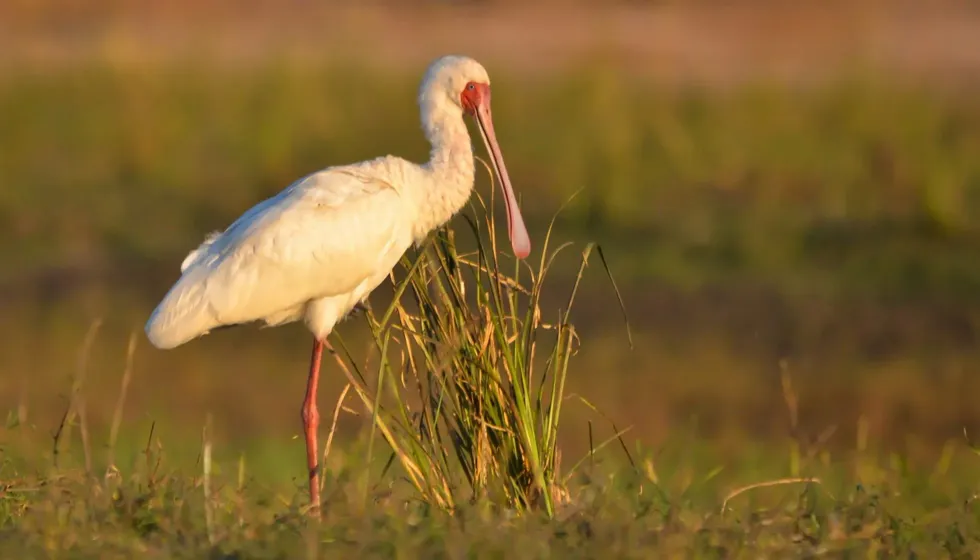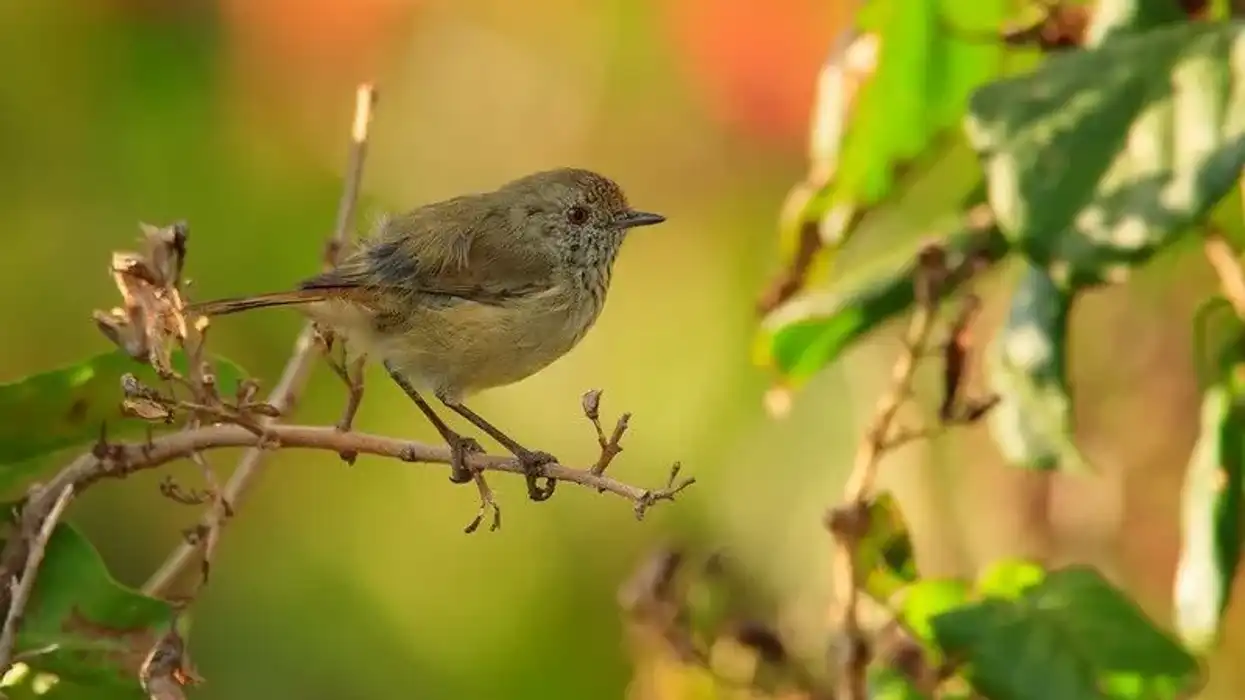The African spoonbill is a long-legged wading bird endemic to Africa. They stay in the same region for the most part of the year and only migrate short distances. The African spoonbill bird is known by its scientific name Platalea alba.
The African spoonbill (Platalea alba) is seen near lakes, rivers, marshes, and coastal regions. Platalea alba birds can specifically be found in Maryland Zoo in the African aviary. The African spoonbill (Platalea alba) is classified as a Least Concern species by the IUCN Red List.
The African spoonbill (Platalea alba) is primarily a carnivorous bird and feeds on small fish, shellfish, insects, crayfish, and water beetles. The African spoonbill (Platalea alba) is diurnal, meaning this bird is active during the day. They forage for food during the daytime. In the evening, they return to roost in their communal roosts.
They give birth from three to ficve eggs per clutch. Platalea alba (African spoonbill) are not solitary and prefer residing in groups. The groups may vary from three to 30 birds.
For more relatable content, check out these fact files on roseate spoonbill and hornbill facts.
African Spoonbill Interesting Facts
What type of animal is an African spoonbill?
The African spoonbill is a bird that belongs to the kingdom Animalia, phylum Chordata, and order Pelecaniformes.
What class of animal does an African spoonbill belong to?
The African spoonbill is a bird that belongs to the class Aves, family Threskiornithidae, and genus Platalea.
How many African spoonbills are there in the world?
African spoonbills are classified as a Least Concern species by the IUCN Red List, however, there are only 7,300-73,000 mature individuals as evaluated by their population size. Their population is currently stable and they live together in small groups. Their population is mostly found in Africa and their population is rarely seen in other parts of the world.
Where does an African spoonbill live?
An African spoonbill bird lives within its range of marshlands, inland waters, shallow water, and coastal regions. Platalea alba (African spoonbill) are found in various parts of Sub-Saharan Africa including Madagascar, Botswana, Kenya, Mozambique, Namibia, South Africa, and Zimbabwe.
What is an African spoonbill's habitat?
An African spoonbill's habitat includes lakes, rivers, marshes, shallow water, and coastal regions. African spoonbills are most active during the day when they forage for food, and in the evening, they return to roost in their communal roosts. Their nest is built with twigs and other things lined with leaves.
Who does an African spoonbill live with?
African spoonbills live together in groups and they are rarely spotted alone. African spoonbills coexist with other species in the wild. They are shy of humans and the instant response is their flight instinct.
How long does an African spoonbill live?
African spoonbills are known to have a maximum lifespan of 15 years in the wild. When in captivity, they can live up to 17 years. Wisdom, the Laysan albatross, is considered to be the oldest bird in the world aged 70 years.
How do they reproduce?
Male and female African spoonbills are primarily monogamous. The breeding season occurs from winter to spring. Males tend to mate with more than one female during the breeding season.
They nest in colonies that are built of sticks and reeds and supported with leaves, however, they do not build individual nests like smaller birds do. Breeding females lay three to five eggs per clutch in the months of April to May. The incubation period lasts 29 days.
The males and females are equally involved in raising their young. The young chicks begin to fledge after four weeks when they leave their nests and become independent birds. Parents move out once the chicks are independent.
What is their conservation status?
African spoonbills is a bird species classified as Least Concern by the International Union For Conservation Of Nature IUCN Red List of Threatened Species.
African Spoonbill Fun Facts
What does the African spoonbill look like?
The African spoonbill bird species are medium to large-sized birds. They have a unique distinguishing feature which is their bill that develops into a spoon shape at the end.
They are born with a short bill, however, as they grow its grows into a spoon-shaped bill. They use their spoon-shaped bill to feed on possible prey which they pick up using this spoon-shaped bill.
They have an overall white plumage except for their red legs, a red face, and a long gray bill. They have a red face with a yellow bill, however, juvenile chicks lack this coloration.
They have a small face with two eyes on either side and a bill in the middle. When they fly, they usually fly with their necks outstretched.

How cute are they?
An African spoonbill is an exotic bird, although it cannot be identified as cute. They might appear funny at first glances due to their spoon-like shape bill. Their young are extremely cute. However, they are rarely seen since they live only in a nest. Juveniles, when born, resemble ibises until their bills grow.
How do they communicate?
They are largely silent birds however when they are alarmed, they end up giving out a distinctive groan. They stay within their habitat range for the most part and are rarely seen near human settlements where other animals are seen.
How big is an African spoonbill?
The African spoonbill is a bird species that is 36 in (91.4 cm) tall which is 40 times taller than the snowy egret, which is 22.1-26 in (56.1-66 cm) tall.
How fast can an African spoonbill fly?
The African spoonbill bird species exact speed is not known. They have moderately good speeds considering they are medium to large-sized birds. They have an overall white plumage except for their red legs, yellow bill, and red face.
How much does an African spoonbill weigh?
An African spoonbill weighs 3.3 lb (1.5 kg). The heaviest bird in the world is the ostrich that also lays the largest eggs in the world compared to other bird species.
What are the male and female names of the species?
Males and females are not addressed differently. Male and female pairs are similar in appearance; however, they differ in reproductive functions. Parents who live in pairs are equally involved in raising the young.
What would you call a baby African spoonbill?
A baby African spoonbill is called a chick. The young chick is taken care of by both parents with equal effort.
The parents build a nest for the eggs using twigs and other material lined with leaves to make them stronger in the breeding area. They are born with a small bill that develops over time into a spoon-shaped bill.
What do they eat?
These birds consume a carnivorous diet. Their diet includes fish, mollusks, insects, including ants, worms, and larvae found in shallow water. They prefer foraging for prey in marshlands and shallow water regions and usually forage together in pairs when searching for food for their young.
They love feeding on small fish. Small fish is what they mainly consume and switch to other things when they cannot find any. Young birds place their head inside the parent's mouth in order to receive food.
Are they dangerous?
No, this birds species might seem dangerous. They might seem dangerous because of their red face and bill, however the red face is only a unique distinguishing feature. These birds are shy of humans and their instant response to any form of threat is their flight instinct. They stay alert from other animals.
Would they make a good pet?
No, these birds are endemic to Africa and found only in a designated region. They are seldom seen in other parts of the world. They thrive best in their natural habitat and it is rare to spot them since they are shy of human beings.
Did you know...
The eagle is known as the king of all birds. They are known for their fast flight patterns and their sharp eyesight.
Birds like cuckoos, cowbirds, and others breed eggs in other birds' nests. Laying an egg in another nest is primarily to give the offspring a secure place and to allow other birds to raise them on their behalf. They do this so efficiently that the other bird will not recognize the difference.
There are about 10,000 species of birds and many are still yet to be discovered. Isn't that amusing?
How many species of spoonbills are there?
There are six different species of spoonbills in the world. These include the roseate spoonbill, black-faced spoonbill, Eurasian spoonbill, royal spoonbill, African spoonbill, and yellow-billed spoonbill. They all have similar breeding and nest-building patterns.
Are spoonbills native to Australia?
Royal spoonbills are found throughout eastern and northern mainland Australia. They are specifically spotted in mainland Australia in the Kimberly region of Western Australia. Royal spoonbills have a black spoonbill and feet. They have similar breeding patterns and habitat requirements.
Here at Kidadl, we have carefully created lots of interesting family-friendly animal facts for everyone to discover! For more relatable content, check out these vulture facts and owl facts for kids.
You can even occupy yourself at home by coloring in one of our free printable African spoonbill coloring pages.









